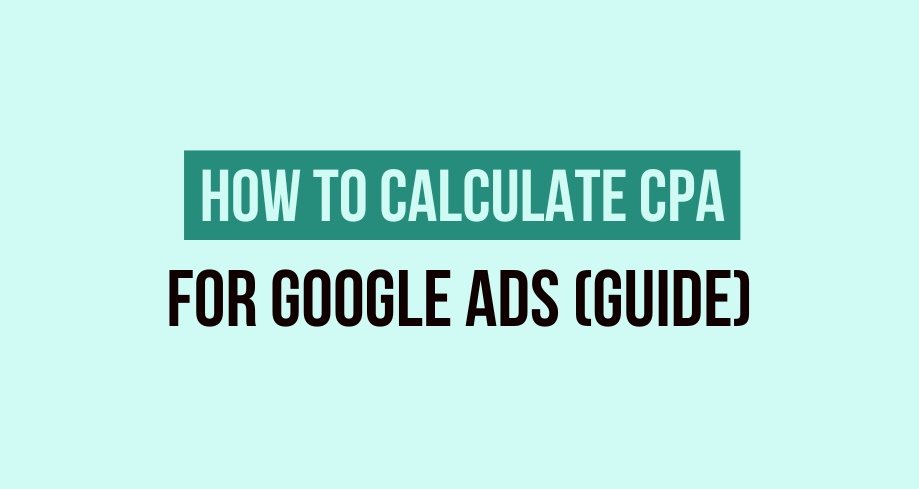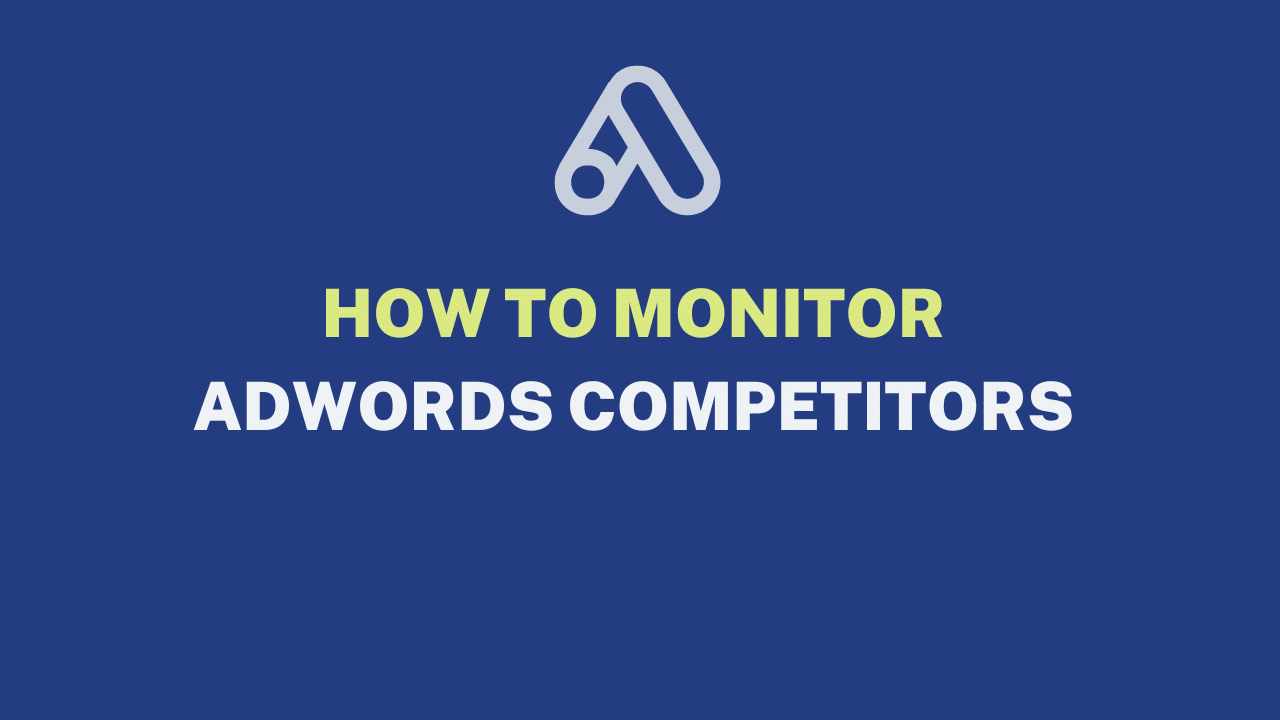When it comes to online advertising, measuring the success and effectiveness of your campaigns is paramount. One key metric advertisers rely on to evaluate their Google Ads performance is Cost Per Acquisition (CPA). CPA refers to the average cost incurred for acquiring a customer or achieving a specific action, such as a purchase or sign-up, through your Google Ads campaigns. How to calculate CPA though?
Calculating CPA allows advertisers to understand their marketing efforts’ true cost and value, enabling them to make informed decisions and optimize their strategies for better results. Today, we will provide a comprehensive step-by-step guide on calculating CPA for Google Ads.
Understanding CPA
CPA, or Cost Per Acquisition, is a fundamental metric used in online advertising to measure the cost incurred for acquiring a customer or achieving a specific action, such as a conversion, through advertising campaigns. It is calculated by dividing the total cost of your ads by the number of conversions generated. CPA provides advertisers with valuable insights into their marketing efforts’ financial efficiency and effectiveness.
CPA is a crucial metric for measuring ad campaign performance because it directly relates to conversions. Conversions represent users’ desired actions after clicking on your ads, such as making a purchase, signing up for a newsletter, or completing a form. By tracking CPA, advertisers can understand how much they are spending to acquire each conversion, which helps evaluate their campaigns’ profitability and success.
Furthermore, CPA is an indicator of the overall effectiveness of advertising efforts. A low CPA suggests that an advertiser is efficiently acquiring customers or achieving conversions at a reasonable cost, indicating a successful campaign. On the other hand, a high CPA indicates that adjustments may be necessary to optimize campaigns, reduce costs, and improve results. By monitoring CPA, advertisers can identify underperforming areas, refine targeting strategies, and allocate budgets more effectively.
Tracking and optimizing CPA is paramount for maximizing return on investment (ROI). By carefully monitoring CPA, advertisers can identify which campaigns, keywords, or targeting options generate the most cost-effective conversions. This insight allows them to allocate their budgets wisely, investing more in high-performing areas and minimizing spending on underperforming elements.
Key Factors Affecting CPA
Click-Through Rate (CTR)
CTR plays a significant role in impacting CPA. CTR refers to the percentage of users who click on your ads after seeing them. A higher CTR generally indicates that your ads are engaging and relevant to the target audience, leading to more clicks and potentially more conversions. When low CTR can drive up your CPA because you’re spending money on ads that aren’t generating enough clicks and conversions.
To improve CTR and subsequently lower CPA, optimizing various elements is crucial. First, create compelling ad copy that effectively communicates your value proposition and resonates with your target audience. Use persuasive language, highlight unique selling points, and include a clear call-to-action (CTA) to encourage clicks.
Second, conduct thorough keyword research and select relevant keywords that align with your target audience’s search queries. By targeting the right keywords, your ads are more likely to appear in front of users actively searching for what you offer, increasing the chances of higher CTR.
Lastly, refine your targeting options to reach the most relevant audience. Utilize demographic, location, and device targeting to ensure your ads are displayed to the right people at the right time. By narrowing down your audience, you can improve CTR and reduce wasted ad spend on irrelevant clicks.
Conversion Rate (CR)
Conversion Rate (CR) directly influences CPA. CR represents the percentage of users who complete a desired action, such as making a purchase or filling out a form, after clicking on your ads. A higher CR means more conversions for the same number of clicks, resulting in a lower CPA.
Optimizing landing pages, user experience, and call-to-action elements is essential to improve CR and lower CPA. Start by designing landing pages that are visually appealing, user-friendly, and optimized for conversion. Ensure that the landing page content aligns with the ad messaging to provide a seamless user experience and reinforce the value proposition presented in the ad.
Place clear and compelling call-to-action elements on your landing pages to improve CR. Use persuasive language and visually distinct buttons and create a sense of urgency to encourage users to take the desired action. Additionally, optimize the form submission process by minimizing friction and only asking for essential information.
Average Cost per Click (CPC)
CPC plays a significant role in determining CPA. CPC refers to the amount you pay for each click on your ads. Higher CPC can drive up your CPA if those clicks do not result in enough conversions.
To optimize CPC and reduce CPA, several strategies can be employed. First, continuously monitor and analyze your keyword performance and bid adjustments. Identify underperforming keywords that have high CPCs but low conversion rates. Consider reducing bids or excluding these keywords to allocate your budget more effectively.
Calculating CPA
Step 1: Determine the Conversion Goal
Defining a clear conversion goal is crucial for accurately calculating CPA and evaluating the success of your campaigns. A conversion goal represents the specific action you want users to take after interacting with your ads. It provides a clear benchmark for measuring the effectiveness of your advertising efforts and helps align your marketing objectives with your overall business goals.
Common conversion goals can vary depending on the nature of your business, but some examples include:
- Purchases: If your goal is to drive sales, each completed purchase can be considered a conversion.
- Sign-ups: For businesses focused on lead generation, a sign-up for a newsletter, membership, or free trial can be a conversion.
- Form Submissions: If capturing user information through forms is essential, each form submission can be counted as a conversion.
To accurately measure CPA, setting up conversion tracking in Google Ads is crucial. By implementing conversion tracking, you can automatically track and attribute conversions to your ads, enabling you to calculate CPA more effectively and make data-driven decisions.
Step 2: Collect Relevant Data
To calculate CPA, you need two primary data points: the total ad spend and the number of conversions.
- Total Ad Spend: This represents the total amount of money you have spent on your advertising campaigns within a specific time frame. It includes the cost of clicks, impressions, or any other advertising metrics based on your bidding strategy.
- Number of Conversions: This refers to the total number of conversions that have occurred during the same time frame. It can be determined based on the specific conversion goal you defined in Step 1.
To collect this data, you can retrieve it from the Google Ads platform by accessing the ads campaign or ad group performance reports. These reports provide detailed information on your ad spend and conversions. Alternatively, you can utilize other analytics tools, such as Google Analytics or third-party tracking platforms, which can provide comprehensive data for calculating CPA.
It’s important to select a specific time frame for accurate calculations. Consider analyzing data over a meaningful period that reflects the typical performance of your campaigns. Avoid using too short a timeframe, as it may lead to unreliable results due to fluctuations or limited data. Similarly, using too long a timeframe may dilute the relevance of the data to your current campaign performance.
Step 3: Calculate CPA:
Calculating CPA is relatively straightforward once you have the necessary data. The CPA formula is:
CPA = Total Ad Spend / Number of Conversions
Let’s walk through a practical example using sample data:
Suppose you have spent $1,000 on your Google Ads campaign, and during that time, you have obtained 50 conversions. Using the formula:
CPA = $1,000 / 50 CPA = $20
In this example, the CPA would be $20 per conversion.
Tips for Optimizing CPA
Improve Ad Relevance and Quality:
To optimize ad relevance, start by conducting thorough keyword research. Identify relevant keywords that align with your target audience’s search queries. Incorporate these keywords into your ad copy and ensure that the ad messaging matches the user’s search intent.
Ad group segmentation is another effective strategy for improving ad relevance. Grouping related keywords together allows you to create more targeted ads that cater to specific user interests. You can increase relevance and attract more qualified clicks by tailoring your ad messaging to match each ad group’s theme.
Ad quality also impacts CPC and ultimately CPA. Google Ads assigns a Quality Score to each ad based on factors like expected click-through rate, ad relevance, and landing page experience. Higher quality scores result in lower CPCs, as Google rewards advertisers who deliver high-quality and relevant ads.
Refine Targeting and Ad Placement
Utilize audience targeting to focus on specific demographic segments or user interests that are most likely to convert. Tailor your ad messaging to resonate with the target audience and deliver a more personalized experience.
Location targeting allows you to display your ads to users in specific geographic locations. If your business operates in certain regions or if location plays a significant role in your target market, refining your location targeting can help improve CPA by narrowing your audience to those more likely to convert.
Device targeting allows you to optimize your ads for specific devices such as desktops, mobile devices, or tablets. Consider the user behavior and preferences for different devices and adjust your bidding strategies and ad formats accordingly.
Test and Optimize
Consider testing different headlines, ad copy, and call-to-action buttons to determine which combinations drive higher CTR and conversion rates. Monitor performance metrics such as click-through rate, conversion rate, and CPA to evaluate the effectiveness of each variation. with your ad campaigns.
Regularly monitor performance metrics and make data-driven adjustments to optimize your campaigns. Analyze the data to identify trends, patterns, and areas for improvement. Make iterative changes based on the insights gained from your analysis.
Frequently Asked Questions
Can CPA be different for different conversion goals?
Yes, CPA can vary depending on the specific conversion goal. Different actions may have varying levels of complexity, value, or cost associated with them. For example, acquiring a high-value sale may result in a higher CPA compared to generating a simple form submission. It is important to track and calculate CPA separately for each conversion goal.
How can I optimize CPA for my Google Ads campaigns?
To optimize CPA, focus on improving key performance metrics such as CTR, conversion rate, and ad relevance. Optimize your ad copy and targeting options, refine your landing pages, and conduct A/B testing to identify the most effective variations. Regular monitoring and adjustments based on performance data are crucial for optimizing CPA.
Is there a specific target CPA that I should aim for?
The target average CPA can vary depending on factors such as industry, business goals, and profit margins. Setting a realistic target CPA that aligns with your desired ROI is important. Consider factors like customer lifetime value, average order value, and overall campaign performance when determining a target CPA that ensures profitability for your business.
Conclusion
Calculating CPA (Cost Per Acquisition) is crucial for effective Google Ads campaign management. You can optimize your CPA and achieve better results by implementing the steps and strategies outlined in this blog post. Remember to continuously monitor, analyze, and refine your campaigns to stay ahead of the competition and drive the best possible outcomes with your ad campaign.




